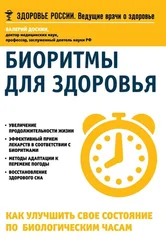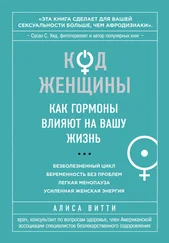7. P. J. Turnbaugh et al., «Diet-Induced Obesity is Linked to Marked but Reversible Alterations in the Mouse Distal Gut Microbiome», Cell Host & Microbe 3, no. 4 (2008): 213—23.
8. Thaiss, «Transkingdom Control of Microbiota Diurnal Oscillations.»
9. A. Zarrinpar et al., «Diet and Feeding Pattern Affect the Diurnal Dynamics of the Gut Microbiome», Cell Metabolism 20, no. 6
(2014): 1006—17. 10. J. A. Foster and K. A. McVey Neufeld, «Gut-Brain Axis: How the Microbiome Influences Anxiety and Depression», Trends in
Neurosciences 36, no. 5 (2013): 305—12.
11. D. Hranilovic et al., «Hyperserotonemia in Adults with Autistic Disorder», Journal of Autism and Developmental Disorders 37, no. 10 (2007): 1934— 40.
12. D. F. MacFabe et al., «Effects of the Enteric Bacterial Metabolic Product Propionic Acid on Object-Directed Behavior, Social Behavior, Cognition, and Neuroinflammation in Adolescent Rats: Relevance to Autism Spectrum Disorder», Behavioural Brain Research 217, no. 1 (2011): 47–54.
13. B. Chassaing et al., «Dietary Emulsifiers Impact the Mouse Gut Microbiota Promoting Colitis and Metabolic Syndrome», Nature 519, no. 7541 (2015): 92–96.
14. B. Chassaing et al., «Dietary Emulsifiers Directly Alter Human Microbiota Composition and Gene Expression Ex Vivo Potentiating Intestinal Inflammation», Gut 66, no. 8 (2017): 1414—27.
15. M. S. Desai et al., «A Dietary Fiber – Deprived Gut Microbiota Degrades the Colonic Mucus Barrier and Enhances Pathogen Susceptibility», Cell 167, no. 5 (2016): 1339—53.
16. K. Segawa et al., «Peptic Ulcer Is Prevalent among Shift Workers», Digestive Diseases and Sciences 32, no. 5 (1987): 449—53.
17. R. Shaker et al., «Nighttime Heartburn Is an Under-Appreciated Clinical Problem That Impacts Sleep and Daytime Function: The Results of a Gallup Survey Conducted on Behalf of the American Gastroenterological Association», American Journal of Gastroenterology 98, no. 7 (2003): 1487—93.
18. J. Leonard, J. K. Marshall, and P. Moayyedi, «Systematic Review of the Risk of Enteric Infection in Patients Taking Acid Suppression», American Journal of Gastroenterology 102, no. 9 (2007): 2047—56.
19. R. J. Hassing et al., «Proton Pump Inhibitors and Gastroenteritis», European Journal of Epidemiology 31, no. 10 (2016): 1057—63.
20. T. Antoniou et al., «Proton Pump Inhibitors and the Risk of Acute Kidney Injury in Older Patients: A Population-Based Cohort Study», CMAJ Open 3, no. 2 (2015): E166 —71.
21. M. L. Blank et al., «A Nationwide Nested Case-Control Study Indicates an Increased Risk of Acute Interstitial Nephritis with Proton Pump Inhibitor Use», Kidney International 86, no. 4 (2014): 837— 44.
22. P. Malfertheiner, A. Kandulski, and M. Venerito, «Proton-Pump Inhibitors: Understanding the Complications and Risks», Nature Reviews: Gastroenterology & Hepatology 14, no. 12 (2017): 697–710.
23. T. Ito and R. T. Jensen, «Association of Long-Term Proton Pump Inhibitor Therapy with Bone Fractures and Effects on Absorption of Calcium, Vitamin B12, Iron, and Magnesium», Current Gastroenterology Reports 12, no. 6 (2010): 448—57.
ГЛАВА 10. Роль циркадного кода в борьбе с метаболическим синдромом: ожирением, диабетом и сердечно-сосудистыми заболеваниями
1. National Institute of Diabetes and Digestive and Kidney Diseases,
«Health Risks of Being Overweight», https://www.niddk.nih.gov/ health-information/weight-management/health-risks-overweight.
2. Y. Ma et al., «Association Between Eating Patterns and Obesity in a Free-Living US Adult Population», American Journal of Epidemiology 158, no. 1 (2003): 85–92.
3. A. K. Kant and B. I. Graubard, «40-Year Trends in Meal and Snack Eating Behaviors of American Adults», Journal of the Academy of Nutrition and Dietetics 115, no. 1 (2015): 50–63.
4. S. Gill and S. Panda, «A Smartphone App Reveals Erratic Diurnal Eating Patterns in Humans That Can Be Modulated for Health Benefits», Cell Metabolism 22, no. 5 (2015): 789—98.
5. N. J. Gupta, V. Kumar, and S. Panda, «A Camera-Phone Based Study Reveals Erratic Eating Pattern and Disrupted Daily Eating-Fasting Cycle among Adults in India», PLoS ONE 12, no. 3 (2017): e0172852.
6. A. J. Stunkard, W. J. Grace, and H. G. Wolff, «The Night-Eating Syndrome: A Pattern of Food Intake among Certain Obese Patients», American Journal of Medicine 19, no. 1 (1955): 78–86.
7. E. Takeda et al., «Stress Control and Human Nutrition», Journal of Medical Investigation 51, no. 3–4 (2004): 139— 45. 8. Z. Liu et al., «PER1 Phosphorylation Specifies Feeding Rhythm in Mice», Cell Reports 7, no. 5 (2014): 1509—20. 9. T. Tuomi et al., «Increased Melatonin Signaling Is a Risk Factor for Type 2 Diabetes», Cell Metabolism 23, no. 6 (2016): 1067—77.
10. M. Watanabe et al., «Bile Acids Induce Energy Expenditure by Promoting Intracellular Thyroid Hormone Activation», Nature 439, no. 7075 (2006): 484—89.
11. A. Chaix et al., «Time-Restricted Feeding Is a Preventative and Therapeutic Intervention against Diverse Nutritional Challenges», Cell Metabolism 20, no. 6 (2014): 991—1005.
12. P. N. Hopkins, «Molecular Biology of Atherosclerosis», Physiological Reviews 93, no. 3 (2013): 1317–1542.
13. D. Montaigne et al., «Daytime Variation of Perioperative Myocardial Injury in Cardiac Surgery and Its Prevention by Rev-Erbα Antagonism: A Single-Centre Propensity-Matched Cohort Study and a Randomised Study», Lancet 391, no. 10115 (2017): 59–69.
ГЛАВА 11. Укрепление иммунной системы и лечение рака
1. C. N. Bernstein et al., «Cancer Risk in Patients with Inflammatory Bowel Disease: A Population-Based Study», Cancer 91, no. 4 (2001): 854—62. 2. N. B. Milev and A. B. Reddy, «Circadian Redox Oscillations and Metabolism», Trends in Endocrinology and Metabolism 26, no. 8 (2015): 430—37. 3. N. Martinez-Lopez et al., «System-Wide Benefits of Internal Fasting by Autophagy», Cell Metabolism 26, no. 6 (2017): 856 —71. 4. D. Cai et al., «Local and Systemic Insulin Resistance Resulting from Hepatic Activation of IKK-beta and NF-kappaB», Nature Medicine 11, no. 2 (2005): 183—90.
5. R. Narasimamurthy et al., «Circadian Clock Protein Cryptochrome Regulates the Expression of Proinflammatory Cytokines», Proceedings of the National Academy of Sciences of the United States of America 109, no. 31 (2012): 12662—67. 6. T. D. Girard et al., «Delirium as a Predictor of Long-Term Cognitive Impairment in Survivors of Critical Illness», Critical Care Medicine 38, no. 7 (2010): 1513—20. 7. S. Arumugam et al., «Delirium in the Intensive Care Unit», Journal of Emergencies, Trauma, and Shock 10, no. 1 (2017): 37–46. 8. B. van Rompaey et al., «The Effect of Earplugs during the Night on the Onset of Delirium and Sleep Perception: A Randomized Controlled Trial in Intensive Care Patients», Critical Care 16, no. 3 (2012): article no. R73. 9. A. Reinberg and F. Levi, «Clinical Chronopharmacology with Special Reference to NSAIDs», Scandinavian Journal of Rheumatology: Supplement 65 (1987): 118—22.
10. I. C. Chikanza, «Defective Hypothalamic Response to Immune and Inflammatory Stimuli in Patients with Rheumatoid Arthritis», Arthritis Rheumatism 35, no. 11 (1992): 1281—88.
11. F. Buttgereit et al., «Efifcacy of Modified-Release versus Standard Prednisone to Reduce Duration of Morning Stiffness of the Joints in Rheumatoid Arthritis (CAPRA-1): A Double-Blind, Randomised Controlled Trial», Lancet 371, no. 9608 (2008): 205—14.
12. A. Ballesta et al., «Systems Chronotherapeutics», Pharmacological Reviews 69, no. 2 (2017): 161—99.
Читать дальше
Конец ознакомительного отрывка
Купить книгу










